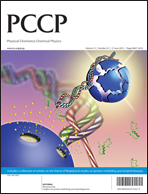Single D-amino acid substitutions can be used to suppress or slow down the aggregation of peptides into β-sheeted assemblies compared to the respective L-amino acids. Here, we investigate the influence of local stereochemistry in the model peptide [KIGAKI]3-NH2, which is known to form amyloid-like fibrils. To find out whether aggregation plays a role in various biologically relevant functions that involve peptide–lipid interactions, we studied the antimicrobial, hemolytic and fusogenic activities of this amphiphilic membrane-active molecule. The stiff and sterically constrained amino acid CF3-Bpg [3-(trifluoromethyl)-bicyclopent-[1,1,1]-1-ylglycine] was incorporated either as an L- or a D-enantiomer at different hydrophobic positions of the KIGAKI sequence. D-Epimers have a higher aggregation threshold than the L-epimers, yet the aggregation of both was confirmed using electron microscopy and circular dichroism. Solid-state 19F-NMR analysis showed that the peptide aggregated in native membranes from human erythrocytes and bacterial protoplasts in the same way as in synthetic lipid bilayers. We then monitored the effect of the single L- or D-CF3-Bpg substitutions in KIGAKI on its distinct biological activities, which have to be measured at low peptide concentrations where the aggregation threshold cannot be directly assessed. These functional assays showed that the aggregation propensity of KIGAKI does not play a role in its antimicrobial action, but an increased tendency to aggregate promotes other undesirable effects such as hemolysis and membrane fusion. These results confirm the membranolytic and thereby toxic nature of amyloidogenic peptides, and emphasize the unpredictable role of peptide aggregation in the different assays used to study biological activities.
![Graphical abstract: Stereochemical effects on the aggregation and biological properties of the fibril-forming peptide [KIGAKI]3 in membranes](/en/Image/Get?imageInfo.ImageType=GA&imageInfo.ImageIdentifier.ManuscriptID=C3CP50896J&imageInfo.ImageIdentifier.Year=2013)
You have access to this article
 Please wait while we load your content...
Something went wrong. Try again?
Please wait while we load your content...
Something went wrong. Try again?
![Graphical abstract: Stereochemical effects on the aggregation and biological properties of the fibril-forming peptide [KIGAKI]3 in membranes](/en/Image/Get?imageInfo.ImageType=GA&imageInfo.ImageIdentifier.ManuscriptID=C3CP50896J&imageInfo.ImageIdentifier.Year=2013)

 Please wait while we load your content...
Please wait while we load your content...